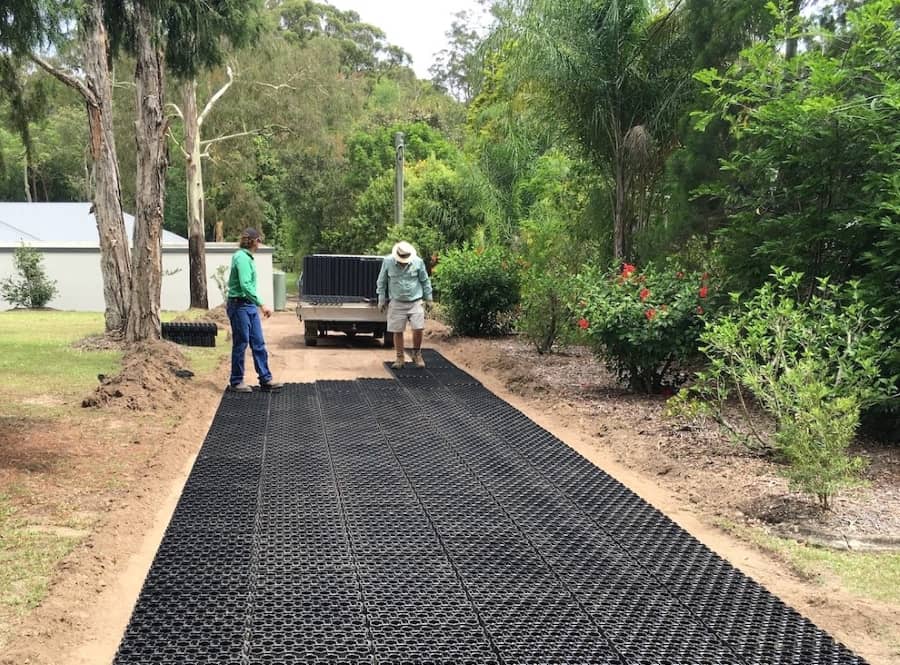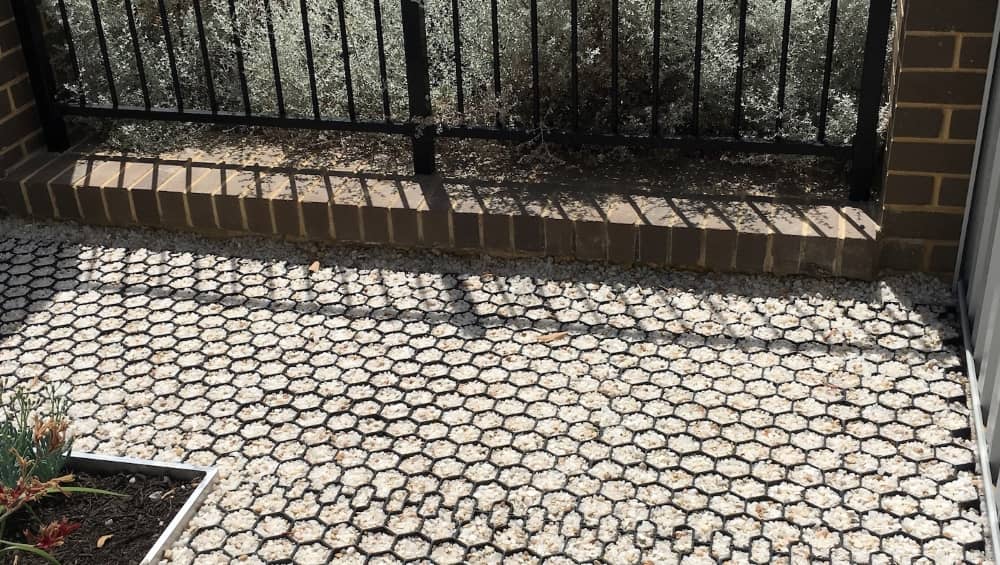GEOHEX Soil Erosion Solution: 11 Benefits for Your Home
You know that controlling soil erosion is vital to have a properly maintained yard. Additionally, stabilising your property makes it safer and can help save water. One of the premier products available for this is GEOHEX.
What is GEOHEX?
A soil erosion control system that controls sediment and excels in ground stabilising, GEOHEX is made here in Australia of 100% recycled post-consumer plastics. The plastic grid controls shearing as well as lateral and vertical movement. The grid is ideal for use in numerous types of soil and substrates.
Weather and seasonal changes do not impact GEOHEX, as it can be installed quickly in any type of weather at any time of the year.
GEOHEX is ideal for a wide range of projects across many industries, including residential applications and can provide considerable savings when compared to concrete and bitumen-type products.
What Are Some Benefits of Using GEOHEX?
There are several benefits to using GEOHEX for your residential projects, including the fact that it is a 100% Australian-made product. Other benefits include:
- It is a simple do-it-yourself solution for many issues on your property. The instructions are straightforward, and you do not need to hire a huge crew to get the job done.
- GEOHEX solves the issues of potholes, wash boarding, corrugations, or general runoff in places like driveways, patios, and walkways.
- You can install GEOHEX under grass. This opens up a world of potential uses, such as creating a space for extra parking, making a spot to store a boat or caravan, or making a safe and level place to enjoy the outdoors. By using GEOHEX, you are making maximum use of your space.
- GEOHEX needs very minimal ground preparation and can be placed quickly.
- GEOHEX has a unique design that holds the aggregate in place. This prevents more extensive materials from being pushed down and fine particles from being pushed to the top, causing dust. It will suppress dust on driveways, walks, and alfresco areas.
- GEOHEX Erosion Control Pavers are strong enough to eliminate subsurface weaknesses. This keeps materials in place and prevents potholes or ruts.
- The grids prevent unnecessary runoff reducing polluted waterways and erosion.
- You do not need to spend time waiting for the product to cure.
- GEOHEX grids stack together and are lightweight, and each paver weighs 2.3 kg. This makes storing and transportation easy.
- You can depend on GEOHEX to last for many years.
- Because the material is easy to cut, you can be creative and design the look you want.
Where Can I Use GEOHEX Soil Erosion Control Pavers?
The GEOHEX Pavers can work in nearly all types of soil and can be placed in various configurations. You should contact the GEOHEX team at (02) 9603 5322 for expert help on your installation and aggregate choice if you will be installing the grid on a slope of 10% or greater.
GEOHEX is ideal for several situations, including:
- Civil
- Commercial
- Equine
- Landscaping
- Mining
- Residential
- Rural
FAQs
- How Big Are the Pavers?
The standard size for GEOHEX Erosion Control Pavers is 0.5 sqm. The pavers have imprinted measurements along the sides of the panel. This makes cutting to size easily if you need alterations.
- Is the GEOHEX System Strong?
The GEOHEX system is surprisingly strong. It features a maximum load-bearing capacity of 1,200 t/sqm. Compare this to the standard semi-trailer truck, which has a nominal wheel load of about 5/t.m2 per axle. The difference is impressive.
- Can I Make Adjustments After the Pavers are in Place?
You can make minor changes once the pavers are set into place. GEOHEX pavers are somewhat flexible, so you can shift them or follow the contour of the ground.
- What Kind of Infill Material is Best to Use with the GEOHEX System?
If you are using the pavers for residential applications, we recommend a coarse granulate material. Preferably it will be a mix of sizes and grades so you can easily pack it down into the matrix. However, if you are building roads, cracker dust, road base or limestone will deliver the best result. You should also note that you should avoid aggregate larger than 15mm as this size will not settle into the void.
- How Much Infill is Necessary to Fill a GEOHEX Paver Adequately?
You can cover approximately 20sqm of GEOHEX with 1m3 of aggregate.
- How Deeply Must I Excavate to Install GEOHEX Pavers Properly?
If you are using the pavers on a civil or mining project, digging at least 200mm is our standard recommendation. Keep in mind you will need to consider the condition of the area. If you have soil that is excessively sandy or wet, you should plan for a thicker base than if your site was solid clay or rock. Additionally, put down a 150mm compacted road base sub-layer before you place the GEOHEX™ pavers.
- What is the Best Way to Install the GEOHEX Pavers?
Once you have excavated and prepared the area, start in a corner making sure the female lugs are facing out. From that point, lay the GEOHEX pavers in a grid pattern and, finally, click the pavers into place.
- How Does the GEOHEX System Increase Safety?
Whether you are using the GEOHEX system in residential or commercial applications, the pavers dramatically increase ground stability to prevent accidents. When used on farms, the system prevents machinery or livestock from becoming bogged down in muddy places because it controls runoff.
- Where Can I Get GEOHEX Erosion Control Pavers?
You can buy the GEOHEX system from Bibra Lake Soils. It is also available for sale internationally.




